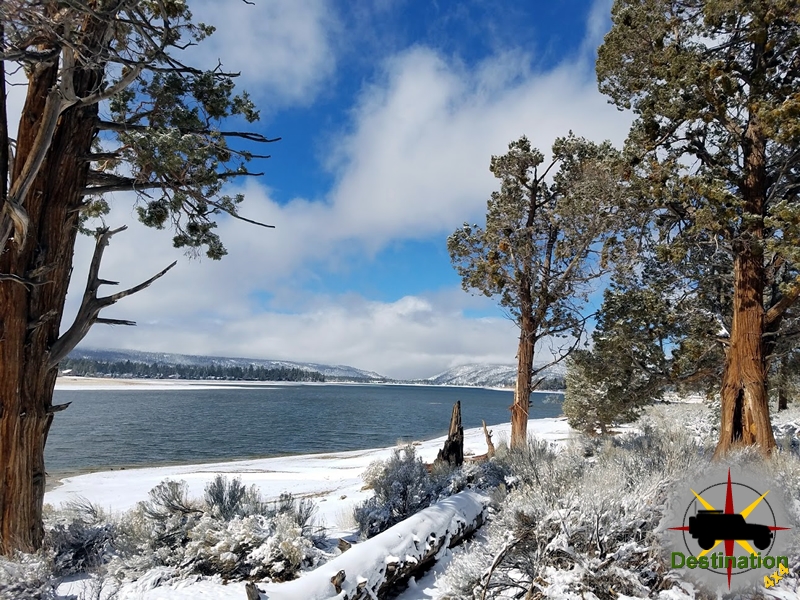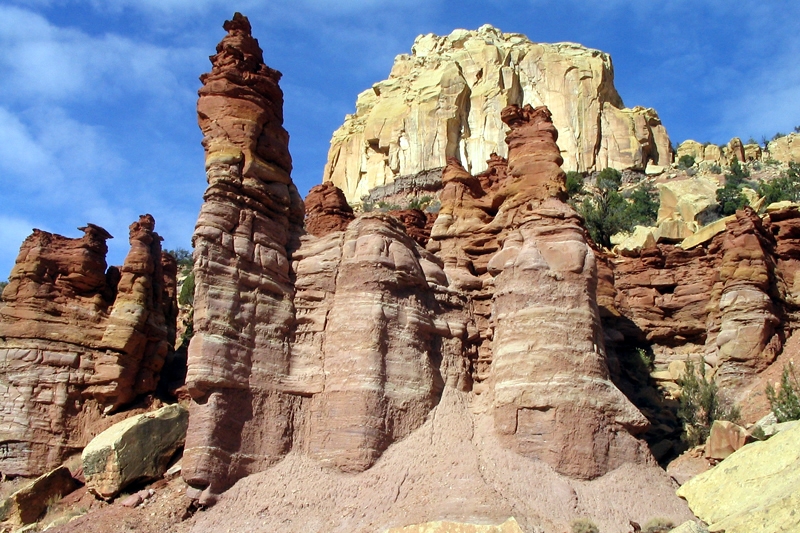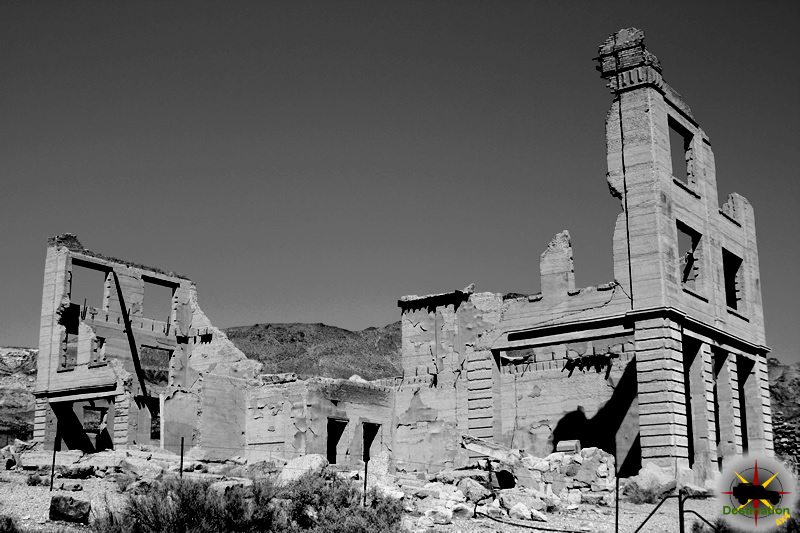
Hiko Nevada – Lincoln County Ghost Town
Hiko Nevada starts to see initial activity in 1853. Silver mines in the area are largely responsible for the people settling the area.

The town is founded by A William Raymond when he purchased several of the twenty six mines in the area of Pahranagat Valley. Raymond built the first mill, and laid out a townsite and named it “Hiko”. The name Hiko an Indian phrase which means “white man’s town.”
By the end of 1866, the area around it had attracted a few hundred residents. Hiko was the county seat of Lincoln County from 1867 to 1871 and is home a few hundred residents living in nearby ranches. By 1871 the mining activity west of Hiko started to falter. After the mining activity subsided, a time lawlessness came to the throughout the valley. At this time, the valley is known for its cattle rustlers, horse thieves and gun-fights.

In 1871 Hiko was replaced as the county seat of Lincoln County by Pioche which continues to serve this function..
As early as 1865, a camp was established here, and during the spring of 1866, W. H. Raymond and others laid out the townsite. The name Hiko is apparently based on a Shoshone term for “white man” or ‘white man’s town. Raymond purchased a five-stamp mill and had it shipped via the Colorado River to Callville and then hauled by oxen the 140 miles to this site. In November 1866, milling began on Pahranagat ores and soon after, Hiko became the first county seat of Lincoln County. In March 1867, Raymond spent nearly $900,000 developing the region before the enterprise failed. The mill was moved to Bullionville in 1870. Hiko consequently declined in population and importance, which accelerated following the removal of the county government to Pioche in February 1871.
STATE HISTORICAL MARKER NO. 206, STATE HISTORIC PRESERVATION OFFICE, NEVADA HISTORICAL SOCIETY
Town Summary
| Name | Hiko |
| Location | Lincoln County, Nevada |
| GNIS | 845862 |
| Latitude, Longitude | 37.5969036, -115.2241887 |
| Elevation | 3,869 feet (,179m) |
| Nevada Historical Marker | 206 |
Hiko Town Map
References
Atolia California – San Bernardino County Ghost Town
Atolia is a ghost town and tungsten mine located in the Mojave Desert in northwestern San Bernardino County, California. The town is located just off the scenic 395 highway near Randsberg, California.
The town’s named was created from the combination for two mining company officials, Atkins and DeGolia, The site started as a tungsten mine in 1905. The town peaked around the time of World War II, when it is known as the largest producer of tungsten in the world. Despite this honor growth is hindered and the town is overshadowed by towns producing more glamorous metals such as gold and siler. Tungsten is a common component used to harden steel alloys. Prior to World War II, Germany is one of Atolia’s largest customers, when their trade access is severed with the formation of British Blockades.
Not to be outdone, the Germans developed cargo submarines known as U-Boats to run the blockade. On July 9th, 1916 the German U-Boat “Deutschland” arrived in Baltimore, Maryland to be loaded with tungsten from Atolia. The town reached a population of 2,000 people during World War I. Following the great war, demand for tungsten plummeted along with its price. The price dropped caused the tungsten mines for close.
There was a brief resurgence in Atolia during World War II, when demand for hardened steel opened the mines again for a brief moment in time.
Atolia Town Map
Town Summary
| Name | Atolia California |
| Location | Mojave Desert, San Bernardino County, California |
| Latitude, Longitude | 35.3147387,-117.6170878 |
| GNIS | 1660280 |
| Elevation | 3,280 Feet |
| Population | 2,000 |
| Post Office | 1906 – 1922, 1927 – 1944 |
References
Ivanpah California – San Bernardino County Ghost Town
Not of be confused with two others sites of the same name, Ivanpah is a ghost town and mine site located along the Eastern edge of San Bernardino County, California. Rich Silver deposits found on the lower slopes of Clark Mountain lead to the founding on the town in 1869.
The Piute Company of California and Nevada was funding the prospecting for Copper in the area when the rich silver ore is discovered. The company quickly laid out a townsite near “Willow Springs” and named the site “Ivanpah” which is the a Native American word for “Clear Water.”
By 1871, Ivanpah is a well know and flourishing trading post. The town itself is host to fifteen well built adobe buildings which include a hotel, two stores, several small houses and the head quarters for the Piute Company of California and Nevada. In 1875 a 5-stamp mill in constructed by the McFarlane brothers. The Lizzie Bullock mine receives a larger 10-stamp mill built by JA Bidwell. A Post Office is founded in 1878 and the following year the foot print of buildings includes o saloons, two stores, two blacksmith shops, two shoemakers’ shops, two hotels, two hay yards, a butcher shop, and several “neat and comfortable” houses.
Ivanpah was host to several mines in the nearby Mineral hills including Hite & Chatfield (renamed to Lizzie Bullock), the monitor and the Beatrice which is owned by Andrew, John, Tom and William McFarland.
The founding of Providence and Calico pulled interest away from Ivanpah, and the ore loosing its quality and value doomed the town to history.
Ivanpah Town Map
Town Summary
| Name | Ivanpah |
| Also Known As | Ivanpah I |
| Location | San Bernardino, California |
| Latitude, Longitude | 35.545, -115.535278 |
| Elevation | 4,880 Feet |
| Active | 1869 – 1898 |
| Population | 100 – 300 |
| Post Office | 1878 – 1899 |
| News Paper | Green-Eyed Monster 1880 |
References
Ophir Canyon Nevada – Nye County Ghost Town
Ophir Canyon is a ghost town from the 1880s and located about 3.5 miles west of State Route 8A north of State Route 92, in Nye County, Nevada. The town began life as Toiyabe City when silver is discovered by a French prospector Boulrand in 1863. Boulrand managed to keeps his find quiet for a year, secreting provisions into the site by night. His secret is finally exposed when he confided his good fortune to countryman on a trip to Austin.
In 1864, R. B. Canfield purchased the principal ledge, also known as the Murphy ledge. Canfield utilized the Twin River Mining Company to secure financing. A wagon road is constructed, in 1865, to the site from the Big Smokey Valley for a cost of $8,000 for the two and a half mile road. The steep route suffered from grades of 10 degrees and nine creek crossings are made with wooden bridges.
A Growing Town
The newly founded Toiyabe City has a population of 400 citizens and a tri-weekly stage from Austin brought in people and supplies for the mines. In 1886, a twenty stamp mill is constructed at great costs, from the natural granite and shale sourced in the area. The mill produced over $750,000 in silver in the next two years. Despite this seemingly high rate of production, the mines did not produce a profit, due to the unusually dense rock which slowed operations considerably.
During its heyday, Ophir Canyon boasted saloons, stores and hotels. A post office operated at the site from June 18, 1867 to December 5, 1893.
Ophir NSHM #62 Text
Well up into the canyon out yonder, one can still see the massive stone foundations of a costly and splendid stamp mill, as well as the stone walls of an elegant office and mansion. Here was the scene of a once busy place, now a ghost town.
Ore was discovered there in 1865 by S. Boulerond and his compatriots. In 1864, the Murphy mine was discovered and became the leading producer; a mining district was organized. During 1865, a 20-stamp mill was completed costing over $200,000. Connected with it was the first experimental Stetefeldt furnace ever built. When the Murphy mill was built, a town was started and it grew to a population of 400, but work in the mines declined in the 1870’s, and Ophir became almost deserted. In the 1880’s, the mines were reactivated, and Ophir had another period of prosperity. By the 1890’s the town was deserted, but some mining activity at the Murphy mine continued sporadically into the 20th century.
Over $2 million worth of gold and silver were mined from the Murphy vein and from surrounding properties. Iron, copper and arsenic were also found in the area.
Ophir managed to have all the accouterments of a large community–school, church, various lodges and, of course, several saloons.
Nevada Historic Marker
Town Summary
| Name | Ophir Nevada |
| Also Known As | Twin River, Toiyabe City |
| Location | Nye County, Nevada |
| Latitude, Longitude | 38.944444, -117.276667 |
| Elevation | 2,479 meters / 8,134 feet |
| GNIS | 860839 |
| Population | 400 |
| Post Office | June 18, 1867 – December 5, 1893 |
Town Map
Resources
Fort Ruby
Fort Ruby, also known as Camp Ruby is an old U. S. Army post which was built in 1862 during the American Civil War, The post is located in the “wilderness of eastern Nevada.” and protected the overland mail coaches and Pony Express, in order to maintain links and communication between residents of California and the Union states to the East.

The fort operated from 1862 to 1869 and was a small outpost in the land of the Western Shoshone tribes. The outpost is built prior to the signing of the Treaty of Ruby Valley in which the United States and the Western Shoshone agreed to allow access and mineral rights to the land in exchange for $5,000 a year for twenty years. These payments was supposed to be delivered in goods and livestock for the tribe. Sadly, only the first payment is delivered.
“Ruby Valley is a bleak, inhospitable place — no forage, nor lumber to build with, and as far as the Indians are concerned, entirely unnecessary to keep troops there,”
Col. Patrick E. Conner
Col. Patrick E. Conner lead the expedition to the site in 1862 and along with 600 men from the 3rd Regiment of California Volunteers, built the fort from stone and wood from the nearby mountains. Fort Ruby was comprised of fourteen buildings including living quarters, stables, corrals and store houses. Water is supplied by the Fort Ruby Spring located close to the fort. Just one month after initial construction of the fort, the men prepared the fort for winter. Upon doing so, the majority of the soldiers packed up and left for Salt Lake City to establish Fort Douglas. In 1864, the California troops were replaced by the Nevada Volunteers, Company B, 1st Nevada Infantry.
The outpost is located in a vast remote location about halfway between Carson City, Nevada and Salt Lake City Utah. The main threat to the men after the treaty is boredom. Aside from a brief action known as the Goshute War with the local natives, there is nothing for the Troops to keep busy after the treaty is signed.
The camp is decommissioned on September 20th, 1869. As the troops left the outpost, ranch families waved goodbye. Fort Ruby and its soldiers had become a welcome part of the valley. the closing of the fort was a social and economic blow to the local ranchers.
Fort Ruby was salvaged by local ranchers and today, no much remains at the site aside from several graves and a historic marker.
Fort Ruby Summary
| Name | Fort Ruby |
| Location | White Pine County, Nevada |
| Also Known As | Camp Ruby, Old Camp Ruby, Old Fort Ruby |
| Latitude, Longitude | 40.0677778, -115.5294444 |
| GNIS | 1681469 |
| Elevation | 1826 meters / 5991 feet |
| National Historic Landmark | 66000460 |







